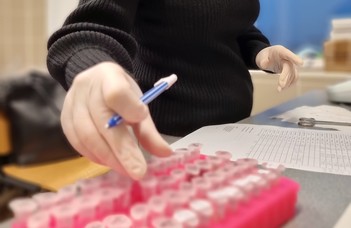Genetics, molecular biology

Since 2007, we have published papers on associations between candidate genes and canine behavior traits such as activity, impulsivity, and attention. We have also conducted studies on DNA methylation patterns of behavior-related candidate genes, genetic markers for species identification, aging, and extremely old age (>22y), gene expression studies, and microevolutionary analysis of dog behavior and life history traits. In addition, we have established a Canine Brain and Tissue Bank using fixation methods such as RNAlater, flesh frozen at -80°C, and formalin and collected sample from more than 170 pet dogs, wolves, and jackals. Furthermore, we have collected buccal swabs from over 3000 dogs (incl. 11 dogs older than 20 years, "gifted" wordlearning dogs), as well as fecal and nasal samples for microbiome analysis from approximately 200 dogs. These samples are accompanied by demographic data and behavior phenotypes, including ADHD, personality questionnaire responses, behavior tests, and olfaction tests (sample sizes vary).
- Garamszegi, L. Z., Kubinyi, E., Czeibert, K., Nagy, G., Csörgő, T., & Kolm, N. 2023. Evolution of relative brain size in dogs—no effects of selection for breed function, litter size, or longevity. Evolution, qpad063. https://academic.oup.com/evolut/article/77/7/1591/7127839
- Kovács, T., Szinyákovics, J., Billes, V., Murányi, G., Varga, V.B., Bjelik, A., Légrádi, Á., Szabó, M., Sándor, S., Kubinyi, E. and Szekeres-Paracky, C., 2022. A conserved MTMR lipid phosphatase increasingly suppresses autophagy in brain neurons during aging. Scientific Reports, 12(1), p.21817. https://www.nature.com/articles/s41598-022-24843-w
- Sándor S, Urfer S, Kubinyi E. Toward establishing a worldwide net of canine biobanks. Aging (Albany NY), 14(6), 2436–2437. https://www.aging-us.com/article/203961/text
- Sándor, S., Jónás, D., Tátrai, K., Czeibert, K., Kubinyi, E. (2022) Poly(A) RNA sequencing reveals age-related differences in the prefrontal cortex of dogs. GeroScience, 44, 1269–1293. https://doi.org/10.1007/s11357-022-00533-3
- Urfer, S.R., Darvas, M., Czeibert, K., Sándor, S. Promislow, D. E. L., Creevy, K. E., Kubinyi*, E., Kaeberlein*, M. (2021) Canine Cognitive Dysfunction (CCD) scores correlate with amyloid beta 42 levels in dog brain tissue. GeroScience, 43:2379–2386. https://doi.org/10.1007/s11357-021-00422-1. *These authors jointly supervised this work.
- Sándor, S., Czeibert, K., Salamon, A., & Kubinyi, E. (2021). Man’s best friend in life and death: scientific perspectives and challenges of dog brain banking. GeroScience, 43:1653–1668. https://link.springer.com/article/10.1007/s11357-021-00373-7
- Sahlén, P., Yanhu, L., Xu, J., Kubinyi, E., Wang, G. D., & Savolainen, P. (2021). Variants that differentiate wolf and dog populations are enriched in regulatory elements. Genome Biology and Evolution, 13(4), evab076. https://academic.oup.com/gbe/article/13/4/evab076/6261009
- Sándor, S., Tátrai, K., Czeibert, K., Egyed, B., & Kubinyi, E. (2021). CDKN2A gene expression as a potential aging biomarker in dogs. Frontiers in Veterinary Science, 8, 348. https://www.frontiersin.org/articles/10.3389/fvets.2021.660435/full, 10.3389/fvets.2021.660435
- Kubinyi, E., Bel Rhali, S., Sándor, S., Szabó, A., & Felföldi, T. (2020). Gut Microbiome Composition is Associated with Age and Memory Performance in Pet Dogs. Animals, 10(9), 1488. IF=2.2
- Koller, D., Kubinyi, E., Elek, Z., Nemeth, H., Miklosi, A., Sasvari-Szekely, M., & Ronai, Z. (2020). The molecular effect of a polymorphic microRNA binding site of Wolfram Syndrome 1 gene in dogs. BMC Genetics, 21:82. IF=2.567
- Jónás, D., Sándor, S., Tátrai K., Egyed, B., Kubinyi, E. (2020). A preliminary study to investigate the genetic background of longevity based on whole-genome sequence data of two Methuselah dogs. Frontiers in Genetics, 11:315. doi: 10.3389/fgene.2020.00315. IF(2018)=3.789
- Turcsán, B., Tátrai, K., Petró, E., Topál, J., Balogh, L., Egyed, B., Kubinyi, E. (2020). Comparison of behavior and genetic structure in populations of family and kenneled beagles. Frontiers in Veterinary Science, 7:183. doi: 10.3389/fvets.2020.00183. IF(2018)=2.14
- Štikarová, R., Vašek, J., Kubinyi, E., Čílová, D., & Vejl, P. (2019). Comparison of minidogfiler and "ASCH" STR multiplex systems for preliminary estimation of variability within wolf's like dog breeds. Forensic Science International: Genetics Supplement Series, 7:862-863. IF(2018)=1.947
- Garamszegi, L. Z., Temrin, H., Kubinyi, E., Miklósi, Á., & Kolm, N. (2019). The role of common ancestry and gene flow in the evolution of human‐directed play behaviour in dogs. Journal of Evolutionary Biology. 33:318-328. IF(2018)=2.541
- Sándor, S., Kubinyi, E. (2019). Genetic pathways of aging and their relevance in the dog as a natural model of human aging. Frontiers in Genetics, 10:948, 10.3389/fgene.2019.00948 IF(2018)=3.517
- Kubinyi, E., Bence, M., Koller, D., Wan, M., Pergel, E., Ronai, Z., Sasvári-Székely M., Miklósi, Á. (2017). Oxytocin and opioid receptor gene polymorphisms associated with greeting behavior in dogs. Frontiers in Psychology, 8:1520. IF=2.323
- Bence, M., Marx, P.. Szantai, E., Kubinyi, E., Ronai, Z., Banlaki, Z. 2016. Lessons from the canine Oxtr gene: populations, variants and functional aspects. Genes, Brains, and Behavior, DOI: 10.1111/gbb.12356. IF=3.743
- Banlaki, Z., Cimarelli, G., Viranyi, Z., Kubinyi, E., Sasvari-Szekely, M., Ronai, Z. (2017). DNA methylation patterns of behavior-related gene promoter regions dissect the gray wolf from domestic dog breeds. Molecular Genetics and Genomics, 292:685–69. IF=2.979
- Kis, A., Bence, M., Lakatos, G., Pergel, E., Turcsán, B., Pluijmakers, J., Vas, J., Elek, Zs., Brúder, I., Földi, L., Sasvári-Székely, M., Miklósi, Á., Rónai, Zs., Kubinyi, E. (2014). Oxytocin Receptor Gene Polymorphisms Are Associated with Human Directed Social Behavior in Dogs (Canis familiaris). PLoS One. 9:e83993. IF=3.234
- Wan, M., Hejjas, K. Ronai, Zs., Elek, Zs., Sasvari-Szekely, M., Champagne, F. A., Miklósi, Á., Kubinyi, E. (2013). Dopaminergic gene polymorphisms are associated with activity-related traits in Siberian Huskies. Animal Genetics, 44:717-727, IF=2.21
- Kubinyi, E., Vas, J., Hejjas, K., Ronai, Zs., Brúder, I., Turcsán, B., Sasvari-Szekely M., Miklosi, Á. (2012). Polymorphism in the tyrosine-hydroxylase (TH) gene is associated with activity-impulsivity in German Shepherd Dogs. PLoS One, 7:e30271. IF=3.234
- Héjjas, K., Kubinyi, E., Rónai, Zs., Székely, A., Vas, J., Miklósi, Á., Sasvári-Székely, M., Kereszturi, É. (2009). Molecular and behavioral analysis of the intron 2 repeat polymorphism in canine dopamine D4 receptor gene. Genes, Brain and Behavior, 8:330-336. IF=3.795
- Héjjas, K., Vas, J., Kubinyi, E., Sasvári-Székely, M., Miklósi, Á., Rónai, Zs. (2007). Novel repeat polymorphisms of the dopaminergic neurotransmitter genes among dogs and wolves. Mammalian Genome, 18:871-879. IF=2.289
- Héjjas, K., Vas, J., Topál, J., Rónai, Zs., Székely, A., Kubinyi, E., Horváth, Zs., Sasvári-Székely, M., Miklósi, Á. (2007). Association of the dopamine D4 receptor gene polymorphism and the “activity” endophenotype in dogs. Animal Genetics, 38:629-633. IF=2.64
